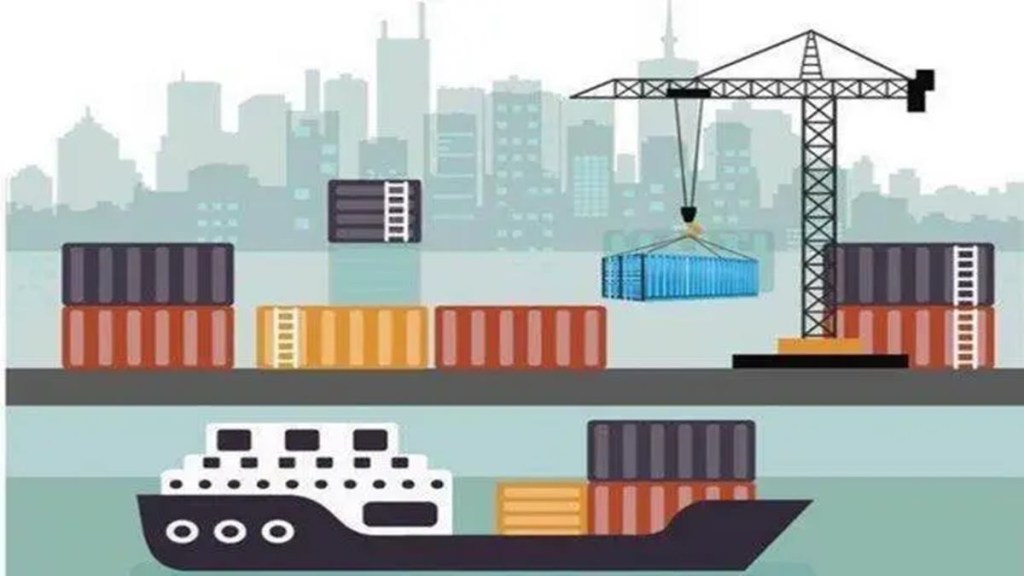The next three to four months would be tough for India’s merchandise exports and a return to growth will depend on recovery in major markets like US and Europe, according to people tracking trade. They also feel that, any significant improvement in demand conditions in the key markets may not materialise before the end of this financial year.
The view in the trade circles is somewhat at variance with the recent statements by government officials that by September, the outbound shipments will turn around, as stocks with overseas buyers would have dried up by then.
“World exports are going through a tough time and the government is taking various steps to deal with that. Return to growth in exports would greatly depend on economic growth recovery in the US and Europe,” professor at Indian Council for Research on International Economic Relations Arpita Mukherjee said.
“June exports may not be that great but exports will be in positive territory in July-September quarter as the global economy improves with inflation falling and financial tightening easing,” Director General and Chief Executive Officer of Federation of Indian Export Organisations Ajay Sahai said.
In April-May, the first two months of this financial year, exports were down 11.41% on year to $69.72 billion dollars. He said that the last two quarters of 2023-24 could see export growth rising and for the full year 10% year-on-year growth is expected. In value terms merchandise exports may touch $ 490-500 billion.
However, former vice-chancellor at Indian Institute of foreign Trade Manoj Pant feels that this financial year the merchandise exports would contract as compared to last year as the windfall of the last two years offered by the Ukraine war in terms of cheaper crude oil and markets for agricultural products like wheat fades away.
The Ukraine war started in February 2022 and in the financial year 2022-23 the exports grew an unprecedented 44.62% on year to touch $422 billion. The war enabled sourcing of cheaper crude oil from Russia and the displacement caused in the markets for agriculture products enabled India to export from its accumulated wheat stocks.
The World Trade Organisation has forecast 1.7 % growth in global merchandise trade volume, down from 2.7% in 2022 and 9.4% in 2021. The high growth in 2021 came after a contraction of 5.1% in world trade in 2020, the pandemic year. So trade is facing major headwinds all over the world.
The petroleum product and engineering goods which account for 45% of total exports have contracted during the first two months of the financial year. Only positive sectors for exports are electronic goods, pharma and rice.
Sahai said fall in crude oil prices has led to a 6% drop in exports in value terms in April-May. He said for labour incentive sectors of export like garments the US market is still showing growth, the only concern is Europe. “Orders are still coming from Europe but they are 30% down in value terms,” Sahai said.
Pant said trade would not be adding much to the country’s GDP but the opening emerging in the electronic and mobile phones sector should be utilised to shift some of the supply chains to India. “If we manage to get 10% of the supply chains from China to shift to India then going to 25% is not too difficult,” he said.
“Smartphone exports from India began last year and in 2022-23 they stood at $10.96 billion. In April itself smartphone exports increased 114% on year to $ 1.06 billion,” according to a senior Commerce and Industry Ministry official.
Pant said if infrastructure, logistics and other ecosystems including manpower availability can handle the shift of supply chains over the next two-three years then India can emerge as a trading power. “The reverse of it is also true. India missed joining the value chain for garments some 20-25 years back. It must draw the benefits of shifting supply chains to itself.”
He also suggested using the global political environment also to engineer the shift of supply chains to India.
Mukherjee said that the deals that are being talked about and may be signed during the ongoing visit of the PM to the US can also help India become part of global high-technology trade. She said some part of the exports are not being captured in the reported data and could add another $5-6 billion to total exports.
Mukherjee also stressed on also providing benefits to exports by express cargo and removal of Rs 10 lakh limit on a single consignment that can be exported through courier. Exports through traditional channels and e-commerce get export incentives but goods sent by express courier do not.
“The limits on value on every consignment acts as an export barrier, nowhere in the world it happens.For a large order exporters have to make multiple consignments that adds to costs,”, Mukherjee said.
She commended the FTA policy of the government and said that small and medium enterprises should be trained for export markets.
